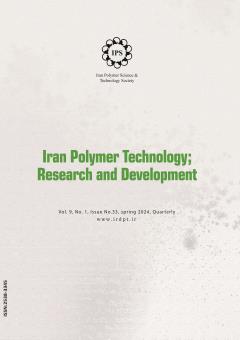-
-
List of Articles
-
Open Access Article
1 - Porous polymers and recent developments in organic covalent frameworks applications in magnetic solid phase extraction method for use in food analysis
Parastoo Fooladi Milad Ghani -
Open Access Article
2 - The effect of additives and masterbatch to improve the properties of recycled polyolefins
Hamidreza Haydari marziyeh hosseini -
Open Access Article
3 - Studying structural properties of polyethylene waxes with infrared spectroscopy
Mina Alizadehaghdam -
Open Access Article
4 - A review of factors influencing the rheological behavior of highly filled composite
Ali Riazati -
Open Access Article
5 - Platform for manufacturing and intelligent production of polymers: genome engineering of polymer materials
Zeinab Sadat Hosseini -
Open Access Article
6 - A Review of Thermal Actuation Methods for Thermally-Activated Twisted and Coiled Polymer Actuators
Mohammadamir Bakhshi Ali Moazemi Goudarzi Fattaneh Morshedsolouk
-
The rights to this website are owned by the Raimag Press Management System.
Copyright © 2017-2026







